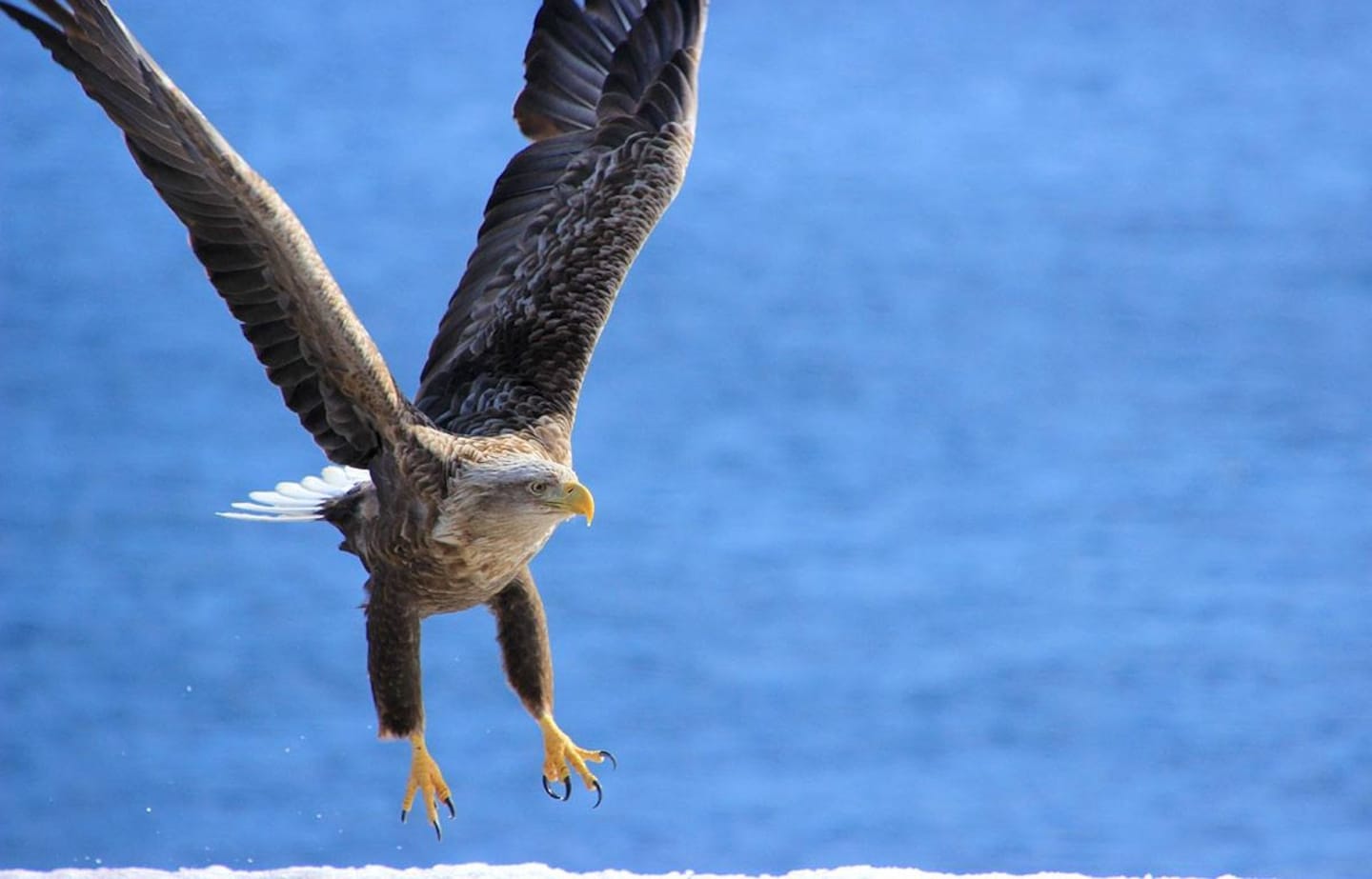22 Animals to See in Japan's National Parks
While Japan may have an image as a land of trains and modern technology, the nation's 34 national parks offer a wealth of wildlife that can be found anywhere from Japan's northern tip to Pacific islands 1,000 kilometers (621 mi) south of Tokyo. Let's start in Hokkaido and work our way down!
By National Parks of JapanEzo Red Fox (Hokkaido)
The wilds of Hokkaido await with a wealth of animal life. Early summer offers a chance to spot the kits of the Ezo red fox (キタキツネ・kitakitsune) in Rishiri-Rebun-Sarobetsu National Park.
Brown Bear (Hokkaido)
As they wake up from hibernation around May, quite a few brown bears (ヒグマ・higuma) can be spotted around the Shiretoko Peninsula in Hokkaido.
Northern Sea Lion (Hokkaido)
Here a northern sea lion pup (トド・ todo) takes a rest on a rock. Seeing marine mammals and seabirds up close is a big feature of kayaking around the Shiretoko Peninsula.
White-Tailed Eagle (Hokkaido)
The white-tailed eagle (オジロワシ・ojirowashi) is a spectacular sight to look out for in Shiretoko National Park.
Yeso Sika Deer (Hokkaido)
Yeso sika deer (エゾシカ・ezoshika) can be spotted in Shiretoko National Park as well.
Steller’s Sea Eagles (Hokkaido)
The Steller's sea eagle (オオワシ・owashi) is just one more fascinating species that can be seen on the Shiretoko Peninsula, recognized by UNESCO for its biodiversity.
Green-Veined White (Hokkaido)
The green-veined white (エゾスジグロシロチョウ・Ezo sujiguroshiro-cho) is yet another species that can also be spotted on the Shiretoko Peninsula.
Japanese Red-Crowned Crane (Hokkaido)
Located in eastern Hokkaido, Kushiro Marsh National Park is a key habitat for the Japanese red-crowned crane (タンチョウ・tancho).
East-Asian Native Mandarin Ducks (Aomori)
East-Asian native mandarin ducks (オシドリ・oshidori) can be spotted in Aomori in spring.
Blue Damselfly (Nagano)
Here a pair of blue damselflies (ルリイトトンボ・ruri-itotombo) make a heart shape in the Norikura Highland (乗鞍高原・Norikura-kogen) in Nagano.
Kentish Plover (Mie)
The Kentish plover (シロチドリ・shiro-chidori) is the official bird of Shima City in Mie Prefecture. Timid by nature, if they spot humans even at a distance, they’ll quickly dart away on their little legs. To avoid startling these birds, please observe them from a distance!
Japanese Striped Snake (Mie)
This Japanese striped snake (シマヘビ・shim ahebi) was spotted at Yokoyama Picnic Site in Ise-Shima National Park.
Japanese Pygmy Woodpecker (Mie)
This Japanese pygmy woodpecker (コゲラ・kogera) was also seen at Yokoyama Picnic Site.
Stellar Rockskipper (Hyogo)
The San'in Coast (山陰海岸・San'in Kaigan) offers a wealth of ocean life that can be seen while snorkeling. Here we see a stellar rockskipper (ホシギンポ・hoshiginpo) spotted in northern Hyogo Prefecture.
Chestnut Tiger Butterfly (Tottori)
Chestnut tiger butterflies (アサギマダラ・asagimadara) appear in Daisen-Oki National Park between spring and summer.
Cows & Horses (Shimane)
Recognized by UNESCO as a Global Geopark, the Oki Islands (隠岐諸島・Oki-shoto) are located in the Sea of Japan off the coast of Shimane Prefecture. These islands are home to the oldest rocks ever found in Japan.
Pale Grass Blue Butterfly (Ehime)
A pale grass blue butterfly (ヤマトシジミ・Yamato shijimi) rests on the flower of a roundleaf chastetree (ハマゴウ・hamago) at Kyukamura Setouchi-Toyo swimming area.
Dragonfly (Kagoshima & Miyazaki)
This dragonfly (トンボ"・tombo) was spotted on the summit of Mount Koshiki (似岳・Koshiki-dake), a volcano in the Kirishimayama mountain range.
Yakusika (Kagoshima)
The island of Yakushima (屋久島) has been recognized by UNESCO as a World Heritage Site. Here yakusika (ヤクシカ) deer can be seen walking among 1,000-year-old trees.
Okinawa Woodpecker (Okinawa)
In early summer, Okinawa woodpeckers (ノグチゲラ・Noguchi gera) can be heard in the forests of Yambaru National Park.
Columba Janthina Nitens (Ogasawara Islands)
Located in the Pacific Ocean about 1,000 kilometers (621 mi) south of Tokyo, the unique ecosystem of the Ogasawara Islands (小笠原諸島・Ogasawara-shoto) has been recognized as a UNESCO World Heritage Site. Columba janthina nitens (アカガシラカラスバト・akagashira karasu-bato), a subspecies of Japanese wood pigeon, is just one of many rare species found on these remote islands.
Whether you like birds or bears or lizards or insects, there's plenty of life to be found in Japan's national parks! Follow National Parks of Japan on Facebook and Instagram for more great photos almost every day!




